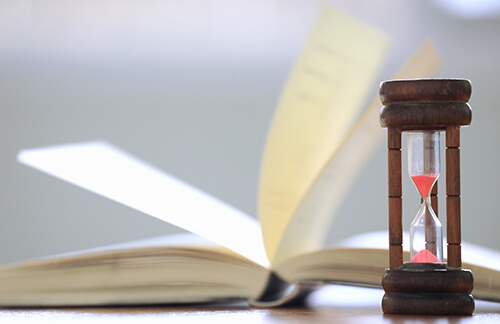Everything You Want to Know About Speed Reading

Have you ever heard about speed reading?
As the name indicates, it is a technique that enables you to read faster and obtain more information in a short amount of time. The concept of speed reading first appeared in the 1950s when Evelyn Wood, a US teacher, began to research why some people can read faster than others without affecting comprehension. She found that this phenomenon relates to the ability of those persons to move their eyes more quickly over words and along passages, while grasping the meaning of what they are reading. Based on her conclusion that any person can develop this capacity with practice, Wood designed a speed reading learning model that was widely popular at the time. Over the years, more speed reading learning methods emerged, and many researchers took the theory further, but the basics remained almost the same. Learning speed reading may help those who want to expand their knowledge in such a rapidly changing world. Even though there are more reading materials than ever, the frantic pace of modern life gives us little time to achieve all of our goals. Most of our reading is now on mobile phones, whereas reading books has become dull and boring for many people. After all, you have to know that this method may not work for everyone. To master it, you need to work hard and not expect immediate results. Also, be aware that its benefits vary from one person to another. There are other factors at play, including your previous knowledge of the topic you are reading about, your language competence and vocabulary, type of the text, and even the page size. It is worth noting that the main aim of speed reading is neither ‘speed’ in itself nor ‘reading’ the largest number of words at the expense of comprehension. The target is to improve your concentration while reading, and to be mentally trained to absorb the meaning of the text in a shorter-than-usual time.
You can find a lot of resources about speed reading and how to master it on the Internet. But why not start learning about it by reading a book? Qatar National Library (QNL) has many books on this topic. We recommend to you Tina Konstant’s Work Smarter with Speed Reading. It is a practical guide to this technique, with an overview of the means that will help you to learn it.
What Is Your Reading Speed?
- Count how many words are in the first three lines of a page, and divide the number by 3, to get the ‘average number of words per line.’
- Count how many lines are on the page, and multiply the number by the ‘average number of words per line’ to get the ‘average number of words per page.’
- Read for 5 minutes.
- How many pages (or lines) have you read? Multiply the number of pages (or lines) by the average above to get the approximate number of words you have read.
- Divide the number of words you have read by 5 to know your reading speed per minute.
Tips for a Better Speed Reading Experience
- Pick a place where you can concentrate. Make sure it is well-lit and comfortable. Take an active sitting posture.
- Before reading, determine your purpose. Why do you want to read this particular material? At the beginning of your speed reading training, start with simple books or topics that you like.
- Skimming and scanning before reading will give you an idea about the topic at hand and make you more familiar with it. For example, before going through a book, preview the table of contents and introduction, then the main headings and subheadings of each chapter. This can be followed by reading the introduction and conclusion of each chapter, quickly scanning the body text, or even reading random paragraphs. As a result, you might be able to decide if the book is useful for you and identify the sections that can help you fulfill your reading purpose.
- Make sure to take some breaks. Speed reading is more mentally exhausting.
- To measure how much you benefit from reading a book/topic, summarize it after finishing, either as bullet points or a mind map. You can also discuss it with any person you know who has already read it.
- Like any skill, it might take some time to master speed reading. You will not learn overnight. It is only by practice that you can develop this skill. Many mobile applications help you practice speed reading. Reading newspapers is also one of the best ways of practicing speed reading, as the texts are arranged in columns, which allows your eyes to move faster down from one line to another
Basics of Speed Reading
- Minimize Pauses Train your eyes to move quickly over words, sentences, and lines. When reading, it is natural that your eyes sometimes stop at a particular word, or at the end of a sentence/passage, to take in the meaning. Try to minimize such pauses. Do not stop at every single word in an attempt to understand it; this curbs your speed. And do not worry! More often than not, the full picture will come out in the end. Remember that the purpose of reading is to make sense of the content as a whole, not mere individual words.
- Do not Skip Back Re-reading words/sentences is another habit that slows you down. To speed-read, do not let your eyes flit back to earlier words/sentences. Wait until the end of the text, and things might get clearer.
- Use a Pointer – Using a pointer that keeps your eyes on while reading can help reduce pauses and prevent regression. You can use your finger or a pen. Alternatively, you can also use a piece of paper or a ruler to cover the words you already read.
- Look at Sentences With your peripheral vision, you can gaze at multiple words at the same time. Focus on the phrases and sentences in each line, instead of reading the text word for word.
- Avoid Pronouncing Words Some people like to pronounce words as they read them, whether by reading out loud or just moving their lips. Others may prefer ‘subvocalization,’ which means to “hear” the words in their heads as they read. This is normal; almost everyone has learned reading through associating the letters and words with their spoken sounds. To benefit from speed reading, you have to stop, or at least reduce all forms of vocalization, to give your mind space to focus on the meaning of the words you read.
